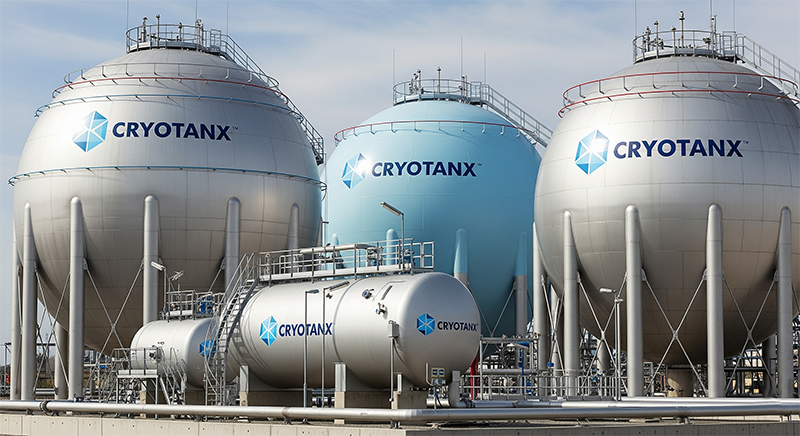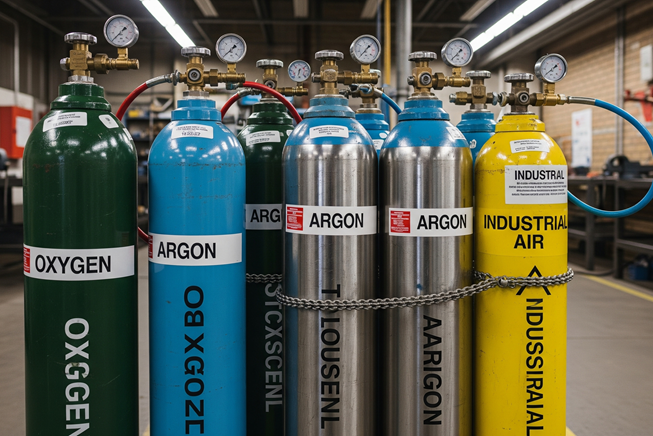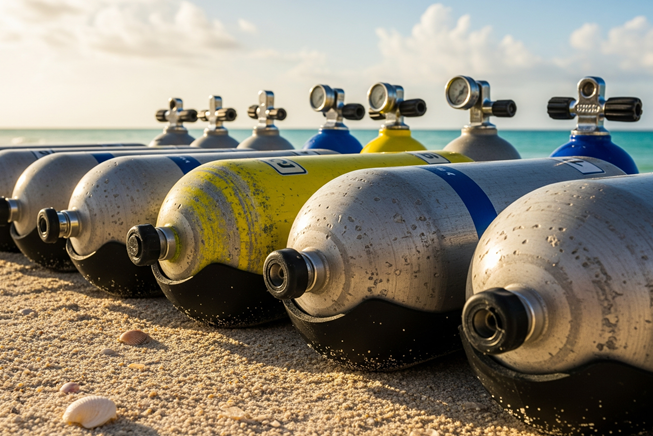| Liquefied Natural Gas (LNG) |
API 620 EN 14620 NFPA 59A |
API 620: Design and construction of large, welded, low-pressure storage tanks. EN 14620: Design and fabrication of vertical, cylindrical, flat-bottomed cryogenic LNG tanks made of metallic materials. NFPA 59A: Safety standards for the production, storage, and handling of LNG. |
LNG import/export terminals, power plants, large-scale industrial facilities. |
| Liquefied Petroleum Gas (LPG – Propane, Butane) |
ASME Section VIII Div. 1/2 NFPA 58 EN 13445 |
ASME Section VIII: The fundamental rulebook for the design, fabrication, inspection, and testing of pressure vessels. NFPA 58: Comprehensive safety code for the storage, use, and handling of LPG. EN 13445: European standard for unfired pressure vessels. |
Residential and commercial heating, autogas stations, industrial facilities, aerosol propellants. |
| Compressed Natural Gas (CNG) |
ISO 11439 NFPA 52 ASME Section X |
ISO 11439: Standard for high-pressure CNG cylinders used as fuel in motor vehicles. NFPA 52: Safety code for CNG and LNG vehicular fuel systems. ASME Section X: Design and fabrication of fiber-reinforced plastic pressure vessels (for lightweight CNG cylinders). |
Fuel storage for buses, trucks, and passenger vehicles, industrial gas distribution systems. |
| Industrial and Medical Gases (O₂, N₂, Ar, CO₂, He) |
ISO 9809 Series CGA Standards (e.g., C-7) EN ISO 7866 DOT-3AA/3AL (USA) |
ISO 9809: International fabrication standard for seamless steel gas cylinders. CGA (Compressed Gas Association): Provides detailed standards on valve connections, transport, maintenance, and safe handling. EN ISO 7866: Seamless aluminum alloy gas cylinders. DOT (Department of Transportation): Mandatory standards in the USA for the transport of gas cylinders. |
Hospitals, welding shops, laboratories, food and beverage industry, electronics manufacturing. |
| Hydrogen (H₂) |
ASME BPVC Section VIII, Div. 3 ISO 19880 Series SAE J2579 NFPA 2 |
ASME Section VIII, Div. 3: Alternative rules for high-pressure vessels (critical for high-pressure storage of hydrogen). ISO 19880: Standards for gaseous hydrogen fueling stations. SAE J2579: Fuel system standards for hydrogen-fueled vehicles. NFPA 2: Hydrogen Technologies Code; safety requirements for production, storage, and use. |
Fuel cell electric vehicles (FCEV), energy storage, rocket fuel, industrial processes (ammonia production, etc.). |
| Underground Gas Storage (Natural Gas) |
API RP 1115 ISO 19190 API RP 1170 / 1171 |
API RP 1115: Recommended practice for the underground storage of hydrocarbons in solution-mined salt caverns. ISO 19190: General principles for underground gas storage. API RP 1170 / 1171: Design and operation of salt caverns created by solution mining. |
Countries’ strategic natural gas reserves, balancing supply and demand, grid management. |



